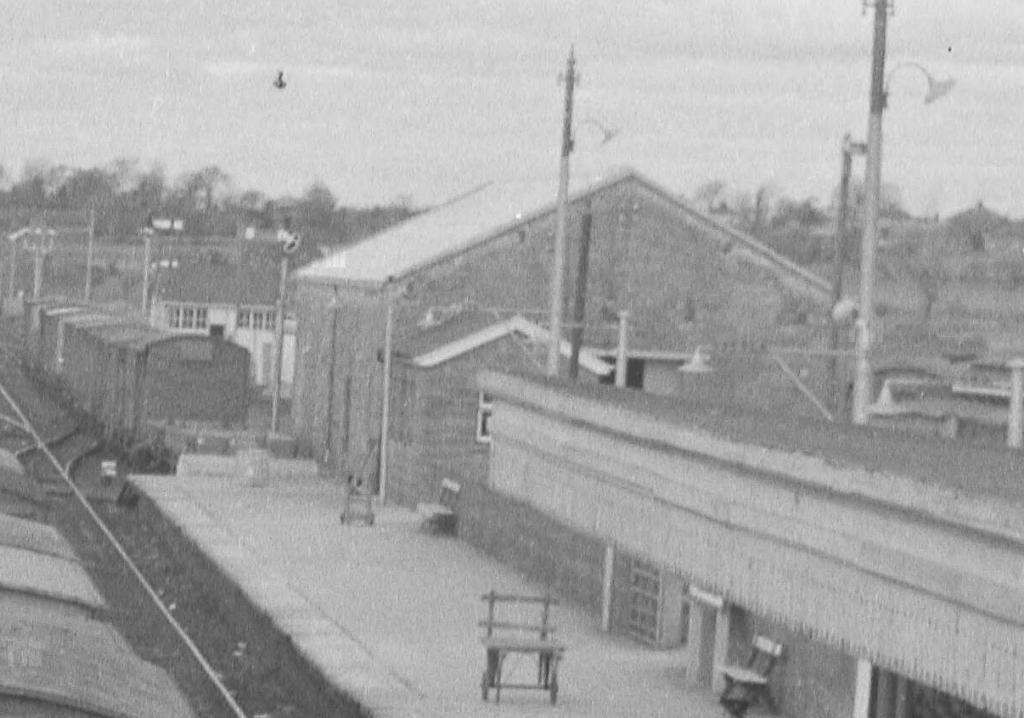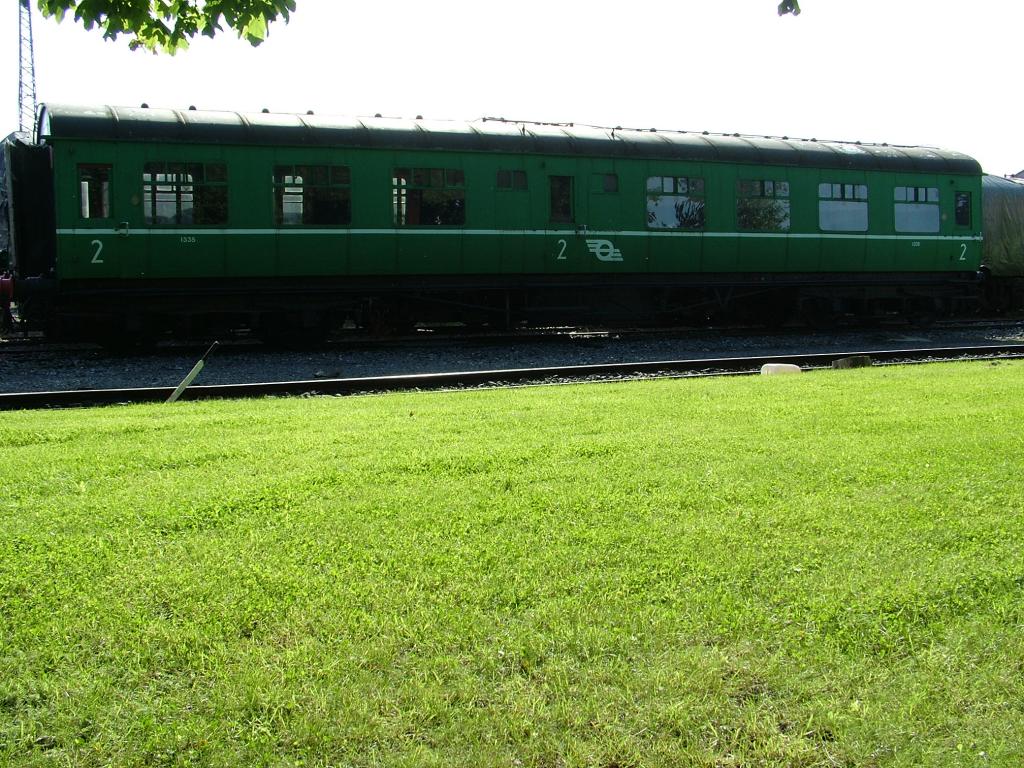-
Posts
3,490 -
Joined
-
Last visited
-
Days Won
11
Content Type
Profiles
Forums
Events
Gallery
Everything posted by Glenderg
-

Irish Railway Models: cement bubble detail request
Glenderg replied to Garfield's question in Questions & Answers
No, taken before I was a glint in me aul lads eyes -

Irish Railway Models: cement bubble detail request
Glenderg replied to Garfield's question in Questions & Answers
-

Irish Railway Models: cement bubble detail request
Glenderg replied to Garfield's question in Questions & Answers
Deep breaths JB. In. Out. Yes, we could have produced H Vans by the ton, and all the many variants like the grain version at ballisodare that I spotted in your book, but it's not something that anyone is crying out for in huge numbers (like the 121) and most, as Pat says, are happy to whack a decal on a BR banana van, ventilated or not. The other thing is that even though we are producing wagons of a certain era, we are keenly aware of other producers products and have no intention of interfering with their commercial strategies. Leslie of provincial wagons is beavering away on the H van, and If any man knows how to research something to within an inch of its life, it's him. Rest assured it will be in the right colours too, fitted or unfitted. R. -

Irish Railway Models: cement bubble detail request
Glenderg replied to Garfield's question in Questions & Answers
The status of the last bubble is under investigation, but suffice to say I am very very impressed with what I've seen from our Asian friends' CAD offerings, and I'm a fussy git. Their detailing of the valve and pipe work at the end is a sight to behold. And Noel, I really think you must have had the blinkers firmly on during that era! I've buckets of shots of them hauled by black and tan diesels. If they were introduced any earlier than 1967, they'd have been hauled by Steam! R. -

Irish Railway Models: cement bubble detail request
Glenderg replied to Garfield's question in Questions & Answers
Correct gents, Merceig would do the masters which then get sent east to be used as a visual template by a select few specialists. It isn't done by machine, all by hand. Yee hardly think I'd be happy with a spray and pray effort? All or nothing folks -

Irish Railway Models: cement bubble detail request
Glenderg replied to Garfield's question in Questions & Answers
Ok, stand down troops. Photos provided. -

Irish Railway Models: cement bubble detail request
Glenderg replied to Garfield's question in Questions & Answers
This may be the only technique to get a valid Irish finish. Going to fun explaining this salty idea to our Asian friends [video=youtube;-0EWdr6t8m0] -
There was no door to the right hand side of the main facade. The reason you see a lintel behind is that it was for supporting something. The black and white photos tells me it is a small roof canopy, my guess being that externally there was some type of big ass crane, the weights etc. being internal. Oh lookeee here. The roof was originally roofed in Bangor Blue slates, but when a timber roof starts to fail, which it must have, they would have simply taken the slates off, sold them, and re roofed in sheet corrugated metal. No need to fix the sagging roof timbers then, make a few bob on the slates, it probably paid for the sheet material. An accountants type of "building management and conservation" The canopy is of 1970's or even 80's vintage. That profile of sheet metal for the fascia is relatively modern. They did an identical gunthering at Tuam. But here's the thing, there was a canopy there already. See the structure on the left hand side? Now also look at the stonework, not coursed random rubble - mighty hard to tie anything in later, that's why you can make out the infill where there was an opening onto the platform with the cattle stop. And if I were a betting man, I'd say the door was straight across from the one on the road side, and of identical size. As for the door openings on the road side trucks would have reversed up to them and parked perpendicular. Now at the turn of the century OS maps there is only a bit of a canopy to that side, which suggests there was only one large door, and possibly a small one. I've seen this before on big ass goods sheds. Clearly they extended the canopy as traffic increased, they opened up the pedestrian door, and then cut another one down the far end. Hence the staggered nature of their spacing. The doors would have been the sliding door type with big lumps of steel to carry the pully mechanism. There also was a canopy on the platform side too - see the remnants of missing joists and exposed wallplate? How big or otherwise is unknown, but if you check the likes of the Lawrence Collection, it might have a photo of it. Have a look through here - a mixed bad of UK and Irish wonderment - And don't forget the depot managers window either, now blocked up. All the infill blockwork would have been done at the same time as the steel canopy was put it. And the extension at the end of the shed is not original, but built at the same time as the signal box, but you already knew that The floor would have been a timber suspended floor, removed to take the weight of kegs etc. made up of big lumps of old railway sleepers. Removed in the 70's too I'd imagine. and Can't remember what else was asked, but I hope the above is of use. R
-
-
-

CIE Regulations for Train Signalling ( any pre 1985 approx)
Glenderg replied to Junctionmad's topic in For Sale or Wanted
Ya, mighty odd what people would pay for such a niche publication I'd have thought. But Dave, just maybe, there are others out there with such an interest in 1970-1980 signal regulation, and hopefully they'll come here ? -
Sounds like you just did, compadre! Pistols at high noon!
-

Tmd/ssm mgwr "e" / gsr j26 / cie 551 0-6-0t
Glenderg replied to Horsetan's topic in Photos of Models
-
I did do a google image search and the only coach that has a similar type vent is the ambulance coaches, akin to a flat top hat. I've looked through my library and there are only torpedo and dome type to be seen. If it were me, I'd go with the dome type, as I have a feeling the Flettner reference is to do with the internal mechanism (passive rotating vent) rather than the shape of the current van mounted type. Hopefully someone might have a fixed answer on it though
-
Coach No. 1335 shown, and vent layout appears to match, though each pair is closer together rather than being divided evenly across the segment of roof if that makes sense? This appears to be the vent type - You might find what you need here - http://www.dartcastings.co.uk/mjt.php#CarriageComponents-Roofs&Fittings R.
-

Lineside structures, South Wexford line.
Glenderg replied to jhb171achill's topic in Irish Model Layouts
A Camera would be preferable JB! -
Tony/Anthony Any chance of a photo of the real thing? I have no idea what's going on here. Any modelling is welcome, but without context,I'm a bit lost. But keep going please, workbench updates are the lifeblood of encouragement.
- 37 replies
-
Top man! Oh and don't forget my brake van fetish, particularly this ballast girl, who survived for 105 years...
-
Yip, thats exactly what I'm talking about Eoin, and exactly what the grinding heads turn into after trying to use them. Having said that, they polish Balsa wood to a nice shine.......
-
I've bought that Parkside "dremel" in the past. Or rather it has been bought for me with all the accessories. The grinding stones might as well be made of sherbert, they wouldn't grind the skin off sour milk. And the dremel thing has a chuck that wobbles. Put any length of a bit in, turn it on, and it looks more like a whisk. Awful junk.
-
I just noticed that there are some subtle differences between the Solidworks 3D (Mulitcoloured images) and the rendered 3D of the proposed models, the latter having a bit more detail. Just be mindful to check the multicoloured images for a closer representation of what will actually be produced.
-
+1, well said man.
-
from David Geen's Website "Part of the "JUST LIKE THE REAL THING" collection by Pete Waterman www.justliketherealthing.co.uk."
-
Still don't want it but want to commend JS for his endless commitment to "turning" JB's photos right way round. Man deserves yet another medal.
-
Totally agree horse. Who in their right mind would want to buy off the shelf quality, when you'd be missing out on the craic of rolling your own boilers. And Pete waterman needs them extra few shillings too, poor fella.
.png.c363cdf5c3fb7955cd92a55eb6dbbae0.png)










